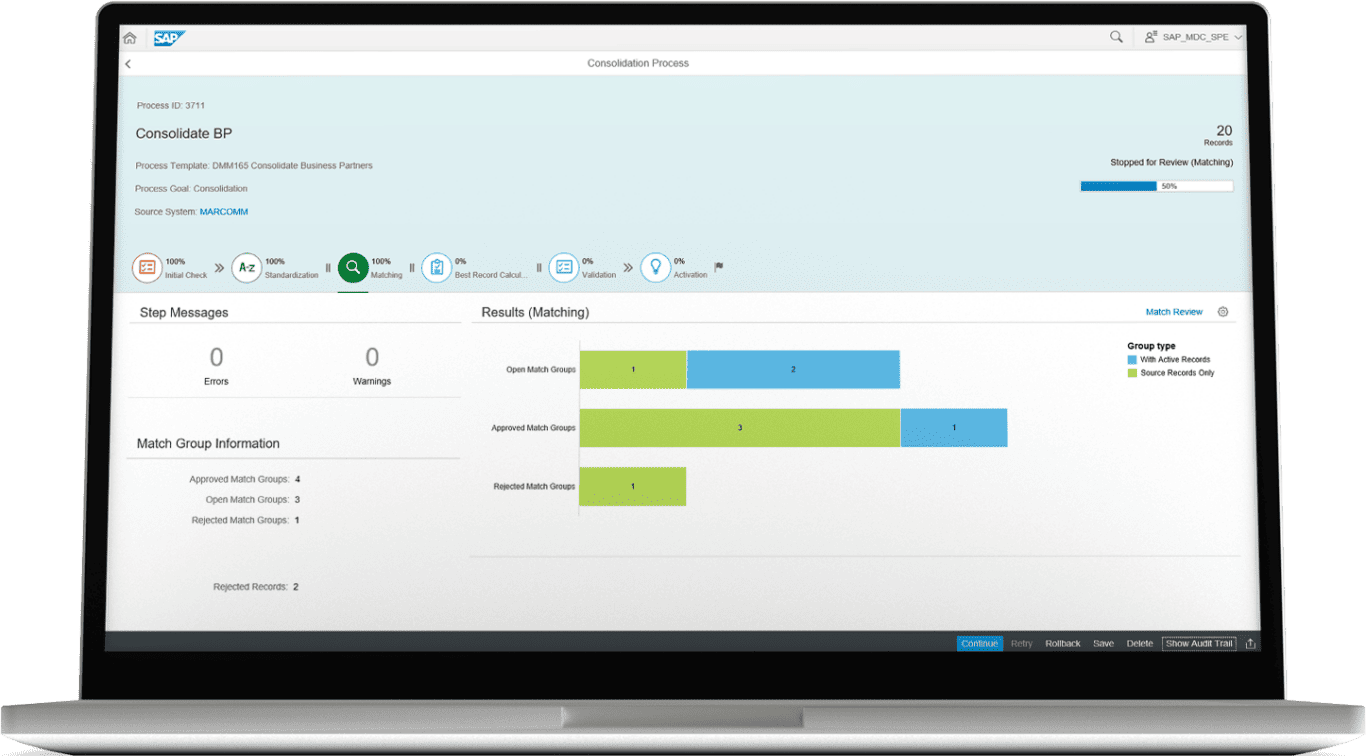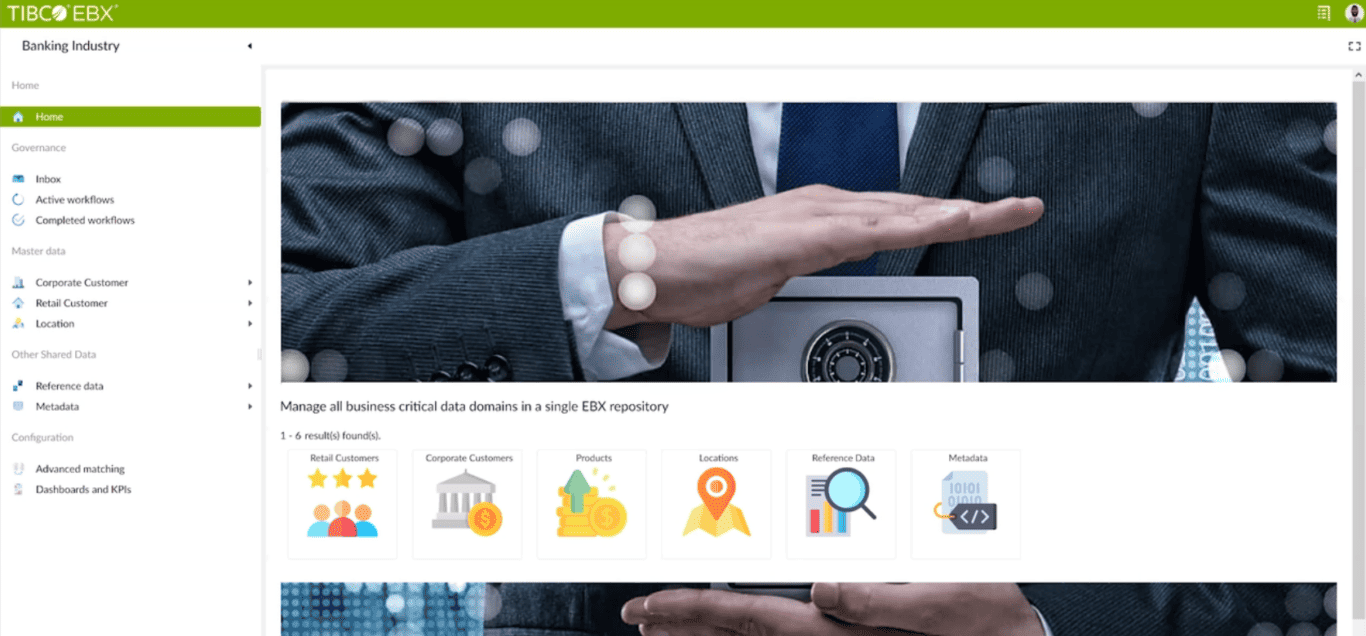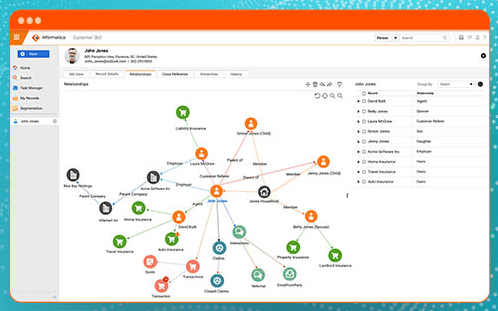How Master Data Management Can Streamline Operations for All Teams
Master data management (MDM) might be a mouthful, but it’s important for all modern businesses to implement. Master data management provides businesses with a clear and condensed view of essential business data that may otherwise be unreliably scattered across an organization. It creates a simple, single source of truth allowing for improved data quality, reduced workloads, better efficiency, and even ensures more compliant processes.
There will always be fires to put out on workplace teams, but data discrepancies, redundancies, and compliance issues do not have to be one of them when you begin to streamline operations and ensure top-notch data quality all around. Let’s dig into what master data management is, why it’s important, and some tools to get you started.
A definition of master data management
Master data management was born out of a need for businesses to improve the quality and reliability of key data assets like product data, customer data, etc. But what is MDM exactly? It’s a discipline, an internal process where IT works alongside all teams to ensure that there is cohesion across all critical data in a “golden record”. Essentially, it’s the standardization of important data to help optimize how this data is used across an organization.
That “golden record” becomes the ultimate source of truth for specific data, with any other records in the organization referring back to it.
5 essential elements of master data management
A master data management process usually involves a lot of resources, whether that’s manual work from a specialist or an expensive, dedicated master data management program. So you’d best make sure that, however it’s set up, your process handles these elements of master data management.
- Duplicate data: When you’re working with multiple data sources, you’ll often run into duplicate data entries. Whether it’s customer data spread out over multiple CRM platforms, financial records across different spreadsheets, or any other kind of data. That’s why a master data management process needs to merge data from all these sources.
- Reconciliation: Often, you’ll have similar data in multiple systems that aren’t exactly duplicates. It’s like each data source has different pieces of the same puzzle, and your team has to hop back and forth to get a completely picture. With a master data management process in place, these bits of data will be pulled together into a single, complete record.
- Data enrichment: This has some similarities with reconciliation, except you’ll be taking a complete record and enriching it rather than combining fragmented data into a complete record. Data enrichment is a long-term process, which happens as new information comes in. That means an effective master data management process needs to be more than just a quick fix.
- Data consistency: Another element of master data management that falls squarely in the long-term, data consistency means reducing errors, duplicates, and other issues as much as possible. Doing that across multiple systems can be tough.
- Reliability: Finally, the ultimate goal of a master data management solution is making your teams feel like their data is reliable. This means they don’t have to preface every presentation with “I’m not sure if this data’s accurate” or spend hours looking for the right spreadsheet whenever they need to build a report.
What type of data needs to be managed?
Core business data that’s used across multiple applications and that is absolutely essential for the organization’s business operations needs this kind of management. As soon as a type of data is needed across multiple teams — and their tools — you have a potential need for master data management.
Some common types of data that needs this kind of management include customer data, product data, and financial data.
Customer data
Customer data refers to personal client information such as their names, contact information, and purchase history. It’s extremely important for businesses to keep this sensitive type of data streamlined and up to date at all times.
Product data
Product data refers to the ins and outs of an organization’s products including their key features, functionalities, usage, and configuration. Since the product is at the heart of the business and its data is used across many applications, master data management becomes crucial to ensure this information doesn’t become fragmented, which would make it difficult to answer a question like, “which product is the most profitable?”
Financial data
This refers to an organization’s financial health including profit margins, revenue, and overall expenses. Having a consistently consolidated view of the financial data allows for optimized financial performance.
The benefits of master data management
Data is great, but when it’s messy and scattered, it can become more of a liability. And with more data being collected than ever before, all businesses could benefit from consolidating their key data into a single source in order to use it most effectively.
Here are five undeniable benefits of master data management.
It reduces the risk of data redundancy
Imagine storing your customer data in different platforms across different departments, each updated at different times and with different notes. Ouch. This dreaded data redundancy can cause confusion and even increase costs by wasting time manually updating systems. To avoid any errors that can seriously affect business down the line, companies can eliminate duplicate data by implementing master data management.
It helps you design better customer experiences
Having a clear and cohesive view of your customers across the organization helps avoid “faux pas” like sending out duplicate marketing emails from numerous customer lists (a sure way to lose followers and subscribers). With the accurate client data that comes with master data management, teams can benefit from more personalized and curated communications that drive sales and enhance customer relationships all around.
It reduces costs
Manual work is rarely the best way to get something done these days. Automation is at the forefront, especially when it comes to collecting and managing data. Master data management allows companies to automate otherwise lengthy and complex processes, freeing up time to analyze the data and put it to good use.
It ensures better data compliance and helps prevent dreaded security risks
Data compliance is no joke. Non-compliant, non-regulated data can lead to penalties and jeopardize a company’s reputation. Master data management can help safeguard the company’s most important data from a security breach, which is not only a huge hassle for any organization but also brings the wrong kind of notoriety.
It permits more informed and strategic decision making
With a precise and holistic view of your company’s data comes the opportunity to make more informed business decisions. Looking at fragmented data on things like product sales or customer behavior means you’re guessing instead of just interpreting data, which is a big no-no when it comes to successful planning and objective setting. Putting in the extra initial effort to ensure your critical business data is consistently up to date and “true” will pay off big time in the long run.
Examples of master data management software
Ready to implement master data management? Good choice. Here are three tools to look into.
SAP Master Data Governance

SAP’s master data management solution comes with excellent customer reviews for its ability to help its users implement truly effective master data management governance and strategies. It promises to simplify and harmonize data management to help users make more informed business decisions.
Here are a few of their standout features listed on their site:
- On-premise cloud deployment
- Support for all master data domains and unique implementation styles
- Prebuilt data models, business rules, workflows, and user interfaces
- Enablement of SAP and third-party systems on a hybrid landscape
TIBCO EBX Software for Master Data Management

Tibco refers to master data management as the “DNA of enterprise data”, so you know they take this seriously. Their vision is to create a single data record that is “reconciled, enriched and corrected” in order to offer a trustworthy view of the most critical business data, allowing businesses to govern, manage and share their data either in a single solution, on-premise, or as a service.
Here are some ways Tibco promises to help:
- Provide consistently accurate data for all domains
- Create the utmost flexibility through fully configurable applications
- Empower business users with self-service capabilities and collaborative governance
Informatica Master Data Management

Microsoft Azure’s Informatica promises a market-leading SaaS solution that offers users easy access to the most important data to drive informed business decisions, decrease costs, increase revenue, reduce risks and improve operations. This solution offers all-in-one capabilities that combine data integration, data quality, data governance, business process management, reference data, and master data management in a one-stop-shop platform.
Here are some of their listed benefits:
- Quick deployment with all-in-one capabilities, prebuilt domain, and industry content
- Self-service access and AI-powered automation that let the users build autonomy
- Ability to connect multiple domains into an enterprise-wide 360-degree view of the company’s business-critical data.
Double down on better practices instead of data
It if isn’t clear by now, duplicate, dispersed, and conflicting data across an organization can quickly become deadweight and a drain on both your resources and finances. Master data management is essential for working more efficiently with data. With the ever-evolving importance of data accuracy to make the most informed business decisions, looking into master data management solutions to streamline your business operations should be at the top of your priority list.
Master data management FAQ
Still have questions about master data management? Let’s answer them.
What is the difference between master data management and ERP?
ERP (enterprise resource planning) is a term referring to software that helps enterprise-sized companies plan how they’ll make the most of their resources. That means properly using budgets through accounting best practices, using project management to plan future projects, going through risk management to avoid potential problems, and even leveraging supply chain management processes. Because these processes all depend on having accurate data, master data management is an important part of them. So think of MDM as just one process in a complete ERP solution.
Are master data management and ETL the same thing?
Not really. ETL (extract, transform, load) refers to a process IT departments and other technical teams use to move data between multiple platforms. At first blush, that sounds pretty similar to master data management and it’s true that you’ll likely need some kind of ETL process as part of your master data management solution. But where ETL is a technical process made for fixing a technical problem (physically getting data from one place to another), master data management is ultimately about fixing business problems (like making sure your customer support team has complete customer data in a single place).
How is master data management used in CRM?
CRM (customer relationship management) is all about tracking and recording all data that comes from interacting with your customers. This discipline is particularly useful for customer-facing teams like sales and customer success, since it ensures they have all the contact information they need to reach your customers, but can also chart a customer’s relationship with your organization. They can quickly know what issues they’ve encountered in the past, how they were resolved, and what kind of marketing communications they’ve been shown. For CRM, master data management is about making sure all this data is accessible in a single platform, usually dedicated CRM software.


